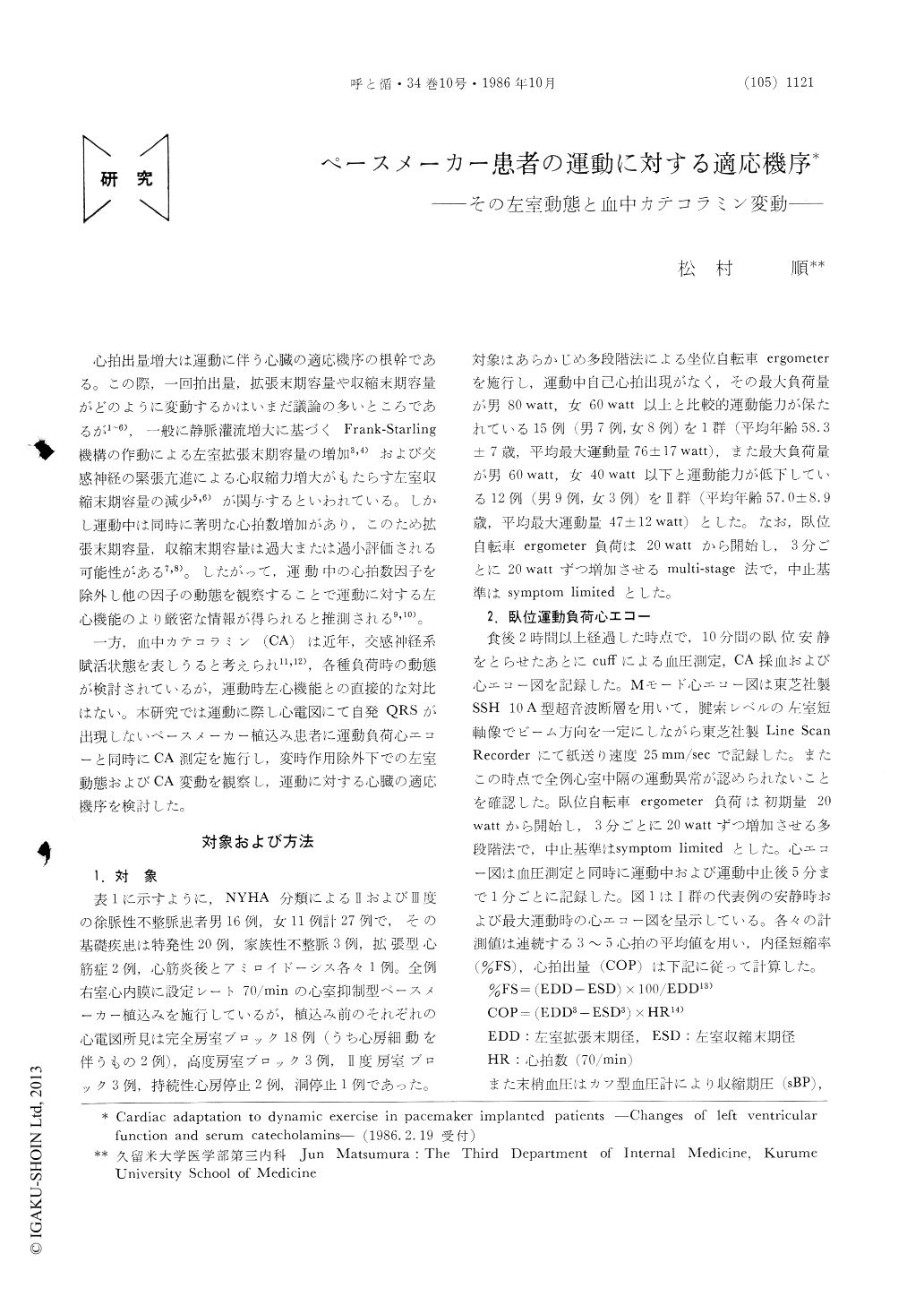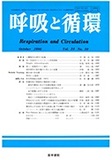Japanese
English
- 有料閲覧
- Abstract 文献概要
- 1ページ目 Look Inside
心拍出量増大は運動に伴う心臓の適応機序の根幹である。この際,一回拍出量,拡張末期容量や収縮末期容量がどのように変動するかはいまだ議論の多いところであるが1〜6),一般に静脈灌流増大に基づくFrank-Starling機構の作動による左室拡張末期容量の増加3,4)および交感神経の緊張亢進による心収縮力増大がもたらす左室収縮末期容量の減少5,6)が関与するといわれている。しかし運動中は同時に著明な心拍数増加があり,このため拡張末期容量,収縮末期容量は過大または過小評価される可能性がある7,8)。したがって,運動中の心拍数因子を除外し他の因子の動態を観察することで運動に対する左心機能のより厳密な情報が得られると推測きれる9,10)。
一方,血中カテコラミン(CA)は近年,交感神経系賦活状態を表しうると考えられ11,12).各種負荷時の動態が検討されているが,運動時左心機能との直接的な対比はない。本研究では運動に際し心電図にて自発QRSが出現しないペースメーカー植込み患者に運動負荷心エコーと同時にCA測定を施行し,変時作用除外下での左室動態およびCA変動を観察し,運動に対する心臓の適応機序を検討した。
To clarify the mechanism of cardiac adaptations to dynamic exercise excluding chronotropic effect, supine bicycle ergometer exercise with 2-dimensional echocar-diogram was performed in 27 pacemaker implanted patients (PMI pts), whose l eart rate were constant during exercise, and five healthy subjects (control : C). Simultaneously, cuff-blood pressure (BP) and serum catecholamine were measured. Patients were divided into two groups by exercise capacity in the sitting bicycle ergometer. Group I (G-I) consisted of 15 pts with relatively good physical work capacity (maximal load : 80 watt≦in male, 60 watt≦in female) and group II (G-II) of 12 pts with depressed physical work capa-city (maximal load : 60 watt≧in male, 40 watt≧in female). The resting left ventricular function was im-paired in G-II. During initial stage of exercise, left ventricular end-diastolic dimension (EDD) and per-cent fractional shortening (%FS) in G-I increased significantly greater than those in the other two groups, and left ventricular end-systolic dimension (ESD) in G-I decreased greater than that in the other groups (G-I>G-II>C). Increase of systolic BP (sBP), posterior wall velocity and sBP/ESD in G-I and C were greater than those in G-II (G-I=C>G-II).At the last stage of exercise, increases of ESD and sBP/ ESD in G-I were lower than those C. Plasma norepi-nephrine levels in PMI pts were significantly higher than in C at rest and during exercise (G-II>G-I>C). Thus, G-I adapts to exercise mainly due to the Frank-Starling mechanism, and to a lesser degree due to an augmentation of contractility corresponding to an inc-rease of circulatory catecholamines. On the other hand, G-II can not adapt sufficiently to exercise because of near limitation of preload-reserve and contractility-reserve at rest, in spite of a remarkable activation of sympathetic nervous system.

Copyright © 1986, Igaku-Shoin Ltd. All rights reserved.


